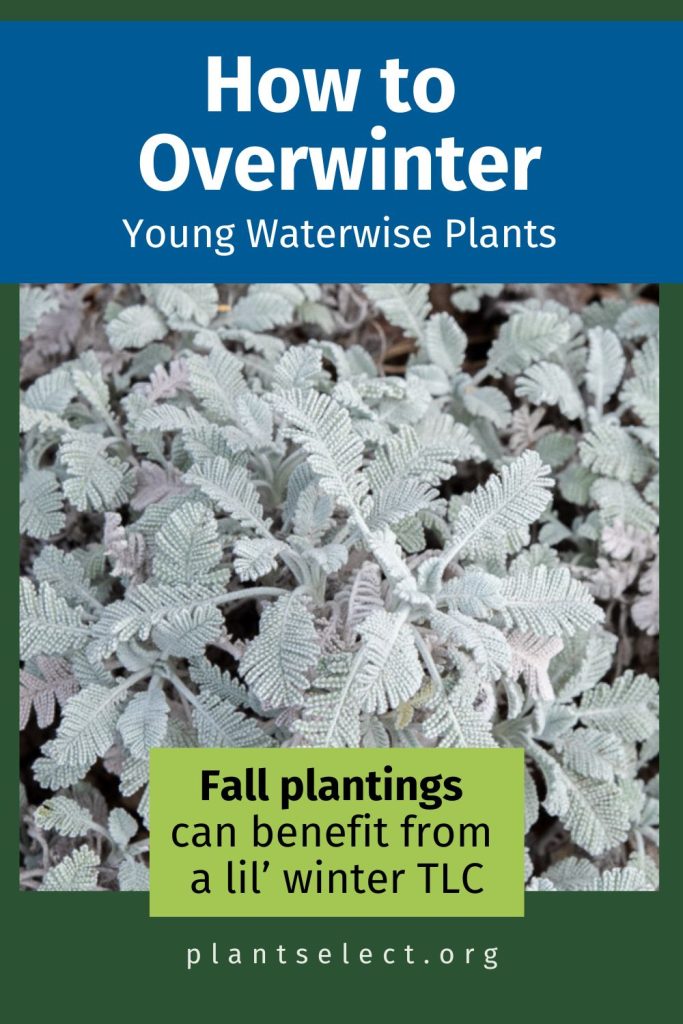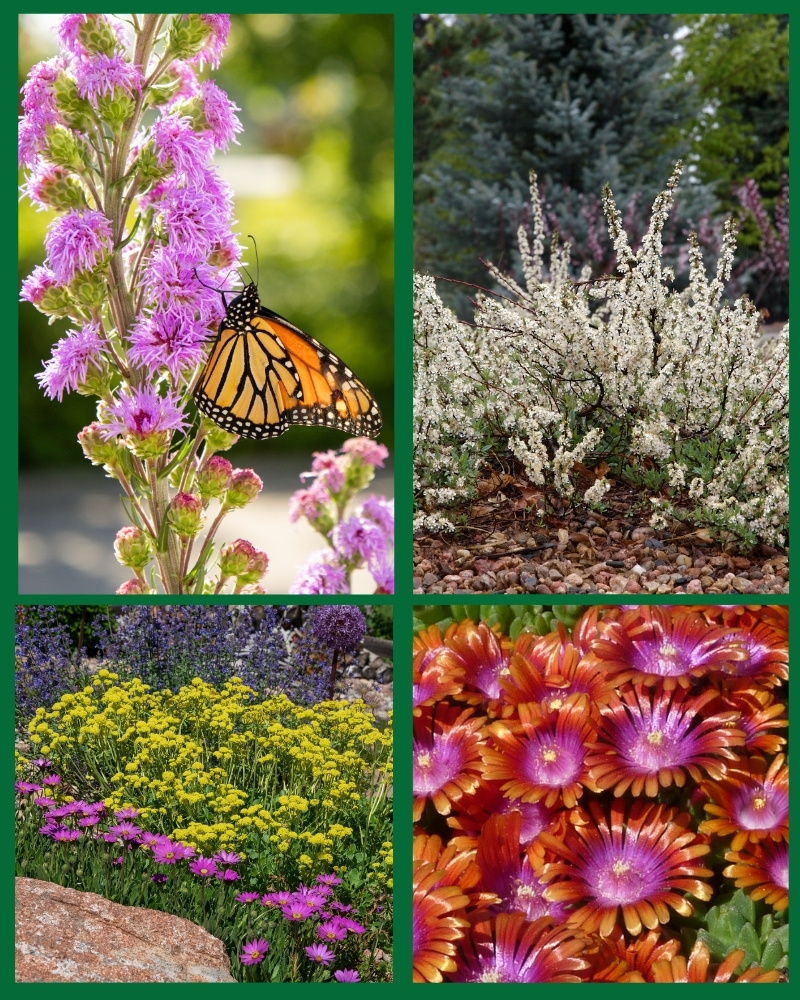Q&A: “I planted this fall. Any tips to help my new Plant Select plants make it through winter?”
Congrats on your new plants! It’s helpful to understand that low-water plants aren’t instantly waterwise. It can take time for their roots to get established.
Trees, for example, can take multiple years to get established. It’s estimated that trees take about one year to establish for every inch wide their trunks are. In other words, a 2.5″ diameter tree can take at least two-and-a-half years to get established under normal conditions!
With this in mind, here are a few, simple tips to help your fall-planted perennials, shrubs and trees better manage their first winter.

#1: Water your new plants well in the fall.
Make sure your new plants are getting good moisture this fall. Water them well, particularly in the first few weeks after planting.
Check the soil around new plants, and water when the top 2-3″ becomes dry. If you have clay soil, water deeply and infrequently. If you have sandy soils, it can be better to water lightly and frequently.
You can learn more about watering different types of soils from Colorado State University Extension.
#2: Water in the winter, particularly during long, dry periods.
Be sure to water your new plants this winter, especially if you have a mild or dry winter. Newly planted trees are particularly susceptible to winter drought damage in states like Colorado and Wyoming.
Check out our winter watering tips here >
#3: Lean into mulch.
Mulch is your friend for new transplants. Mulch helps keep the soil moist. Plus, it can help the soil retain warmth, so your plant roots can keep growing late into autumn. And it can help minimize winter “soil heave”—the upward push of soil from freezing and thawing that can expose and damage plant roots.
As a general guideline, apply 2-3″ of mulch—such as small wood chips, pine needles, pea gravel or squeegee—around your new, waterwise perennials. Some waterwise plants, like ice plants (Delosperma), prefer inorganic mulch, including pea gravel and squeegee. Avoid piling mulch directly on top of the “crown” of the plant. (The crown is the base of the plant where the roots and the stems meet.)
If you have a new tree or shrub, place mulch at a 3″ depth around the tree. Keep the mulch at least 6″ from the trunk on all sides.
OPTIONAL #4: Consider tree wrap for a young HOT WINGS® Tatarian Maple.
Plant Select has introduced resilient trees that don’t need a lot of winter care in normal circumstances.
For example, young Plant Select trees typically don’t need winter tree wrap to protect them from sun scald or frost crack. Yes, maple trees can be vulnerable to sun scald and frost crack in the West, but normally, it isn’t necessary to wrap a HOT WINGS® Tatarian Maple (Acer tataricum ‘Garann’).
With that said, if you would like to err on the side of caution, you can wrap a young HOT WINGS® Tatarian Maple from Thanksgiving to Tax Day (late November to mid-April). It should not harm the tree. But be sure to remove the wrap by mid-April.
Here are steps on how to winter wrap trees from Colorado State University Extension.



